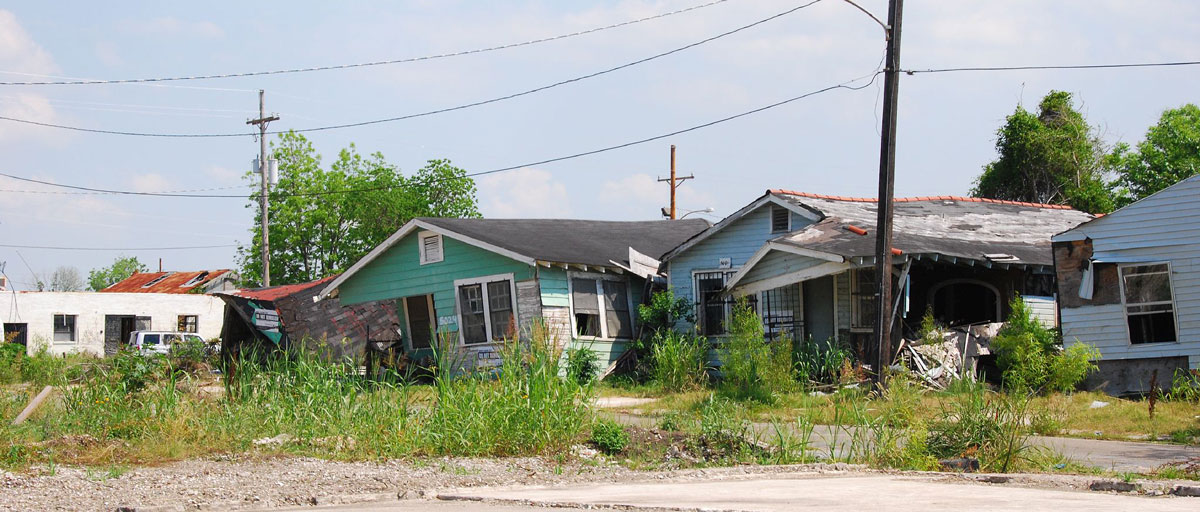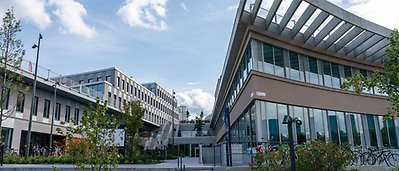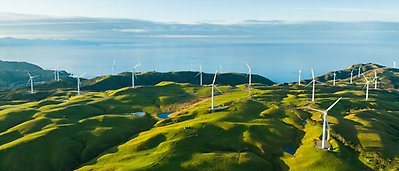
The study shows that neighborhoods in New Orleans are experiencing highly differentiated outcomes both in terms of population recovery and vegetative conditions. Poor and working class areas are still struggling, according to the study. Photo: P. Batty/Flickr
Hurricane Katrina recovery
The weeds are thicker on the poorer side of town
Changes in vegetation reveal deeper social differences in New Orleans
- Study is one of the first social-ecological studies of urban vegetation dynamics following a major flood disturbance
- Poor and working class African-American areas have been particularly
affected, not only by the hurricane, but also from inconsistent recovery
and rebuilding - Without further action by local, state or federal authorities, places
like the Lower Ninth Ward will continue to suffer from limited community
development and population recovery
When it comes to natural disasters, few have drawn as much attention as the flooding of New Orleans and the US Gulf Coast a decade ago. The levee failures triggered by Hurricane Katrina in 2005 flooded 80 percent of the city of New Orleans, killing over 1800 people and causing $81 billion in property damages.
Needless to say these damages have had a pervasive effect on both humans and ecosystems in and around New Orleans.
Yet for all the post-disaster reflections and initiatives, precious little attention has been paid to changes in urban vegetation patterns, and how those changes are intertwined with housing recovery, economic reinvestment, and ecological dynamics.
Still struggling
In his recently published doctoral thesis, Centre student Joshua Lewis presents one of the first social-ecological studies of urban vegetation dynamics following a major flood disturbance.
The study shows that neighborhoods in New Orleans are experiencing highly differentiated outcomes both in terms of population recovery and vegetative conditions.
Request publication
"My study presents a complicated view on urban resilience. New Orleans has regained nearly 80 % of its pre-storm population and many of its core business sectors have rebounded robustly. Many neighbourhoods in the city are fully repopulated or even exceed their pre-Katrina populations, but the economic and environmental benefits of this apparent resilience are not evenly shared between social groups or neighbourhoods," Joshua Lewis explains.
Poor and working class African-American areas have been particularly affected, not only by the hurricane, but also from inconsistent recovery and rebuilding. A neighboring suburban community, St. Bernard Parish, home to a large white working class population, has also suffered from chronically low population recovery.
"The communities most exposed to the devastating effects of Hurricane Katrina are the same communities still struggling to regain residents and control emergent, often invasive, vegetation"
Joshua Lewis, lead author
"Certain neighborhoods (like the Ninth Ward) on the eastern flank of the city have experienced severe vegetation trauma, high rates of land abandonment, the expansion of emergent vegetation patches dominated by invasive trees and shrubs, and much more fragmented and uncoordinated landscape maintenance compared to more affluent neighbourhoods," Lewis continues.
Existing inequalities exacerbated
To assess the impacts of Hurricane Katrina on vegetation in the study area, Lewis and his co-authors developed a vegetation trauma and recovery index for each study neighbourhood based on near-infrared photographs to examine vegetation changes before and after the hurricane.
Over one hundred vegetation survey plots, 400m2 in size, were established throughout the study neighborhoods, where detailed information on plant species richness diversity and urban forest metrics were collected.
Demographic data was collected from the US census along with interviews and focus groups with residents and land managers.
The analysis shows clear differences between neighbourhoods both in terms of population loss and recovery after the hurricane. More affluent areas have seen high population and housing recovery compared to the less affluent ones, leaving the latter areas with more properties subject to unmanaged vegetation overgrowth, in the absence of active redevelopment.
For a region known for its iconic trees like the Southern Live Oak and Southern Magnolia, the contrast between the vegetation aesthetics in places like the Uptown and Lower Ninth Ward are stark.
"Our analysis indicated that Katrina’s impact and subsequent redevelopment programmes may have exacerbated the spatial inequalities inherent in New Orleans' tree canopy cover, with smaller invasive trees and shrubs concentrated in disadvantaged communities, with the more heritage and iconic species concentrated in wealthier areas," Lewis explains.
He says that the increasing hazards from unmanaged invasive trees and shrubs have also affected property values and the quality of ecosystem services.
Resilience only for the privileged?
Lewis warns that without further action by local, state or federal authorities, places like the Lower Ninth Ward will continue to suffer from limited community development and population recovery. From a resilience perspective, such a capacity may in the end be limited to a privileged few.
“If resilience is to meaningfully inform policy and public debate, it needs to be discussed in close relation to environmental justice, or else it can be perceived as a tool to maintain unjust, or even oppressive social structures,” Lewis concludes.
Research profile
Joshua Lewis studies how cities and other human-dominated landscapes emerge and are transformed through linked socio-political and ecological processes. His field work is based in New Orleans and the lower Mississippi River Delta, where before joining the Resilience Centre, he was a Research Analyst at Tulane University.






